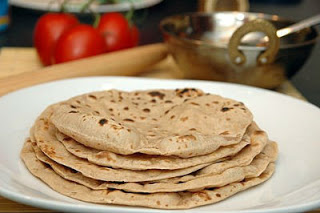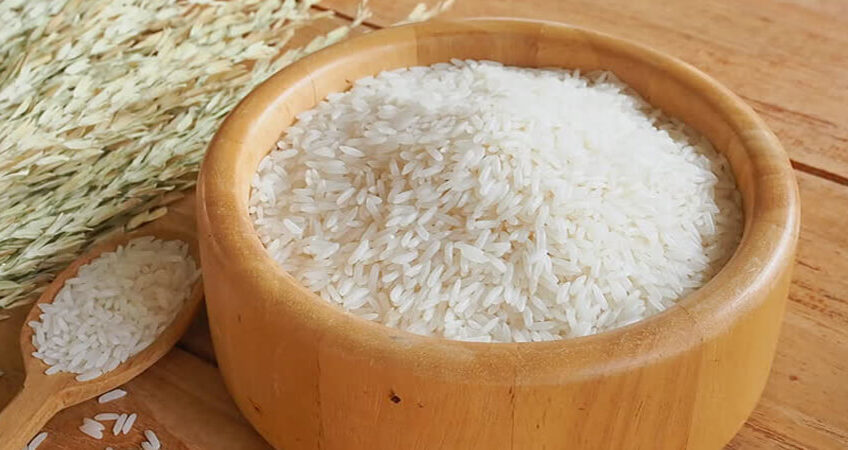Ayurvedic physicians and their fabled lengthy list of Do’s and Don’t s are well known. It makes me happy when the patients ask, what not to eat doctor? I deeply respect these individuals and appreciate their courage of listening to a NO for eating their favorite dish or food item.
One question, very frequently asked is about Rice.
Rice is the staple of a significant majority of the population across the globe and probably so from the inception of civilisation.
Even according to ayurveda Rice is considered as the Prime food so much so that even the Sanskrit word ANNAM is used interchangeably for Food and Rice.
Then what has transpired in the past couple of decades that this divine food is now considered the culprit?
Why has it become the most blamed food item after sugar for having a high G.I. ( sudden sugar spike in blood), Worsening the state of Diabetes, Hyperlipidaemia (Cholesterol), Obesity, Hypothyroidism and PCOD?
Lets decode Rice and Rotis:?
- Carbohydrates own a huge portion in one’s balanced diet and is the most important macronutrient. Along with the majorly popular Rice and Wheat, our country, is blessed with a myriad of traditional crops produced in different geographical regions like, Bajra, Jowar, Ragi, Barley, etc.
- Carbohydrates are the major source of fuel
- Most easily used by the body for metabolism
- All tissues and cells utilise glucose ( end product of carb-metabolism) for producing energy
- Central nervous system, Brain, Kidney, Muscle depend on carbohydrates for deriving energy
- They are stored in liver and muscles
- Help in waste elimination and nutrient absorption
- Fiber, non-digestible carbohydrate itself is the famed fiber in food
- Depending on the current food trends for choosing the right food for our selves, a few things should always be borne in mind.
- All the recent food studies are being conducted either in the Americas or the European countries.Foods which grow there, the Climate, their Race, Geographical conditions and Temperate zone add up to make a lot of difference for us. Blindly following them could make it more difficult for us in the Indian Subcontinent which has its own unique climate, crops and cuisine. I see a lot of editorials where the content is just copy/pasted without even an iota of consideration. ( e.g. ‘Have apple cider vinegar first thing in the morning’. Now, vinegar increases Pitta and most of the troubles in india are because of heat- pitta and the vinegar endorsing population has problems of kapha – cold. How do you ‘copy/pasting intellectuals’ think it will help us indians?)
- India itself is divided by the ‘Tropic Of Cancer’
What North Indians eat would again be very different from how the South Indians do.
A north Indian would shout out and say that the rice makes him drowsy, while a south indian would say that roti gives him heat.
While wheat is known for its cooling properties, no matter how much rice South Indians eat, some still continue to suffer from incurable insomnia!

Rice
The real culprit are,
Industrial revolution : Where the over enthusiastic – imprudent, started using machines to polish away the bran and chaff.
White is good : Right from fairness cream-brides, to rice traders, to persisting Imperialist Colonial complex, everybody continues to delude us, on the white colour.
Traders : Rice bran has essential oils which goes rancid on being stored for a long time. Thus to store them for long time the bran was polished off.

And thus this polished rice has
- No fibre
- No nutrients – Vitamin
- High glycemic index
- Pure starch
- And yes the pretty white colour.

And what does brown rice do Apart from not making one drowsy?
Brown rice has:
- twice the manganese and phosphorus of white.
- 2.5 times the iron.
- 3 times the vitamin B3.
- 4 times the vitamin B1.
- 10 times the vitamin B6.
- It is a great source of manganese, essential for energy production, antioxidant activity, and generate good hormone production.
- High fiber and selenium content reduces colon cancer
- Weight Loss and Reduced Metabolic problems
- Lower cholesterol. A study at Louisiana State University showed that rice bran and rice bran oil reduced LDL (bad) cholesterol.
Ayurveda mentions four basic varieties of rice
- Rice that is white on de-husking, Shali. (increases kapha / strengthening )
- Rice that is brown on de-husking
- Rakta shali – Red rice – navara ( high on micronutrients )
- High starch varieties, small grain Rice ( least healthy )
Old rice, Purana Shali ( minimum 10 months old) is healthier with a very low G.I. compared to freshly harvested one.
Unpolished/minimally polished rice may not be very popular among us, the Mango people (aam junta). When I asked a patient to stop eating white rice and switch to brown/ hand pounded rice , he told me , ‘celebrities’ engage in such high handed fads. I wanted to tell him probably a century ago, eating white rice was fashionable, but I restrained, thinking I would make my self look like the one endorsing all the other celebrity quirks too!
Unpolished rice takes a long time to cook – thus digests slowly too. Which does not lead to a sudden spike of blood sugar (G.I.). Also, makes one feel full for a long time without making one feel hungry too soon.
Cooking of rice
- Should always be soaked before cooking
- Should always be made in an open vessel
- Pressure cooked rice is very hard to digest
- The starch water should always be drained, more than once if prescribed on a low calorie diet.
- Roasting the rice lightly before boiling makes it even lighter to digest.
Should be eaten Warm, without re-heating/microwaving, along with ghee, lemon and a little salt
Roti

- The flour should be coarse, never too fine ( blame the industrial age!)
- Whole wheat be selected for grinding
- Rotis made on burner ( Phulka ) are lighter to digest but increases Vata
- Rotis made on the griddle/ tawa are heavier to digest but decreases Vata
( In Rajasthan, people prefer eating rotis made on tawa for the very reason. The folk-lore clearly says that rotis made on burner causes ‘baadhi’ which I discerned was a colloquial for Vayi – Vata and should not be thus eaten. Understandably, because the desert has so much vata to give them already. While people elsewhere make Phulkas on burner and never complain.)
- Be eaten Warm with a tiny dollop of ghee.
Flour for Diabetics/ Hyperlipidaemics/ Obese
- 2 parts wheat
- 1 part barley ( jav ) – not oats
- 1/2 part Bengal gram / Kala chana.
I think we , from the Indian subcontinent are very lucky to have such diverese topographical features.
Each one with its own distinct flora & fauna and the myriad foods we can choose from . Thus, making most of our rich culture and traditional Ayurvedic cooking methods, one can make a choice of eating what one likes and desires, which part of the country/world he resides and also knowing one’s prakriti and state of doshas. Because only a satiated palate that promotes health is blissfully happy to the soul.
Dr. Zeel Gandhi, B.A.M.S



